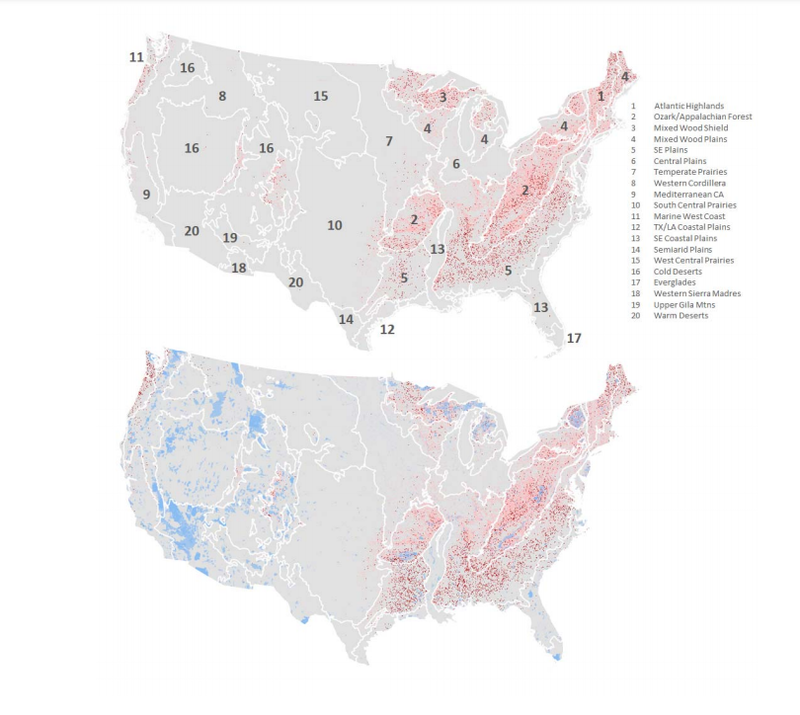

Temperate deciduous forests are one of the most visible biomes on Earth because of their autumn aesthetics and because they harbor some of the most heavily populated regions, including in the United States. Their location and their ability to attract leaf-peeping outsiders may provide greater opportunities for people to experience nature, which has been linked to greater conservation action. However, accelerating human modification of landscapes means continued forest loss and fragmentation. We use spatial overlay analyses to quantify recent (1984-2016) and predicted (2016-2050) forest disturbance in each U.S. ecoregion and the extent to which each ecoregion falls into protected areas. Almost all ecoregions saw a steady decline in deciduous forest cover between 1985 and 2016 with some of the top ecoregions for autumn aesthetics being underrepresented in the protected areas network and vulnerable to additional losses. Generally, ecoregions undergoing greater proportional losses have greater forest area and are less represented in the protected areas network. Under worst-case forecasting scenarios, losses are predicted to continue. However, environmentally focused scenarios suggest there is still opportunity to reverse deciduous forest loss in some ecoregions. The large difference in forest loss estimates in the predictions scenarios emphasizes the importance of human approaches to economic growth and sustainability in securing environmental stability. Increasing public exposure to temperate forests may help ensure conservation of more natural areas and preserve the quantity and quality of autumn forest viewing.